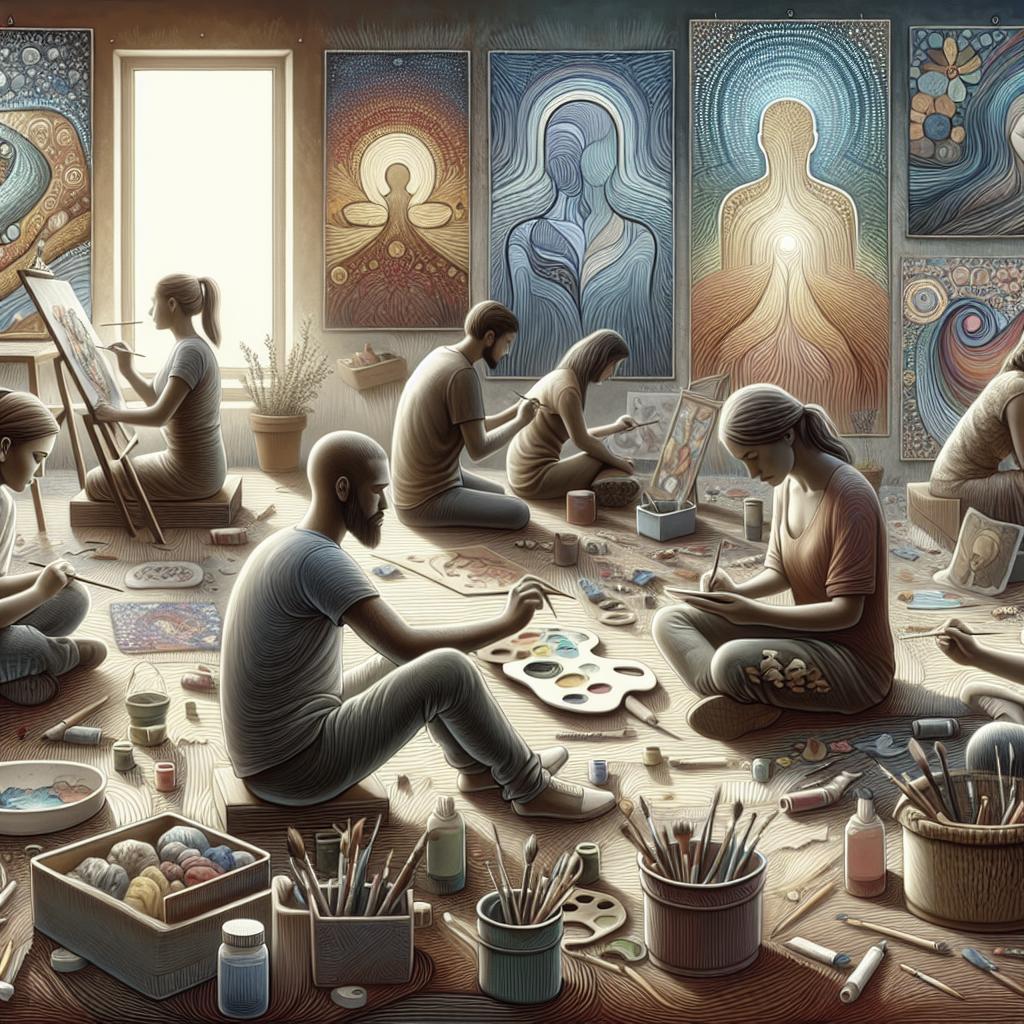“`html
The Benefits of Art Therapy for Trauma Recovery
Art therapy has emerged as a powerful tool in the recovery process for those who have experienced trauma. This article delves into the essence of art therapy, exploring how it serves as a healing balm for trauma survivors. We begin by defining what art therapy entails and what constitutes trauma, before exploring the intricate ways trauma affects the brain and body. We then discuss the myriad benefits art therapy offers to trauma survivors, providing a sense of restoration and peace. Finally, we summarize the transformative potential of art therapy and its role in fostering long-term recovery and well-being.
What is Art Therapy?
Art therapy is a form of expressive therapy that utilizes the creative process of making art to improve a person’s physical, mental, and emotional well-being. Leveraging the potential of various art forms such as painting, drawing, sculpting, and other creative practices, art therapy aims to foster healing and emotional reparation. Essential to this practice is the idea that self-expression through creative mediums can help individuals explore and communicate feelings they might struggle to express verbally.
In a therapeutic setting, art is not just a tool for expression but a vehicle for building insight, enhancing coping skills, and fostering problem-solving abilities. Guided by a professional art therapist, individuals can embark on a journey of self-discovery, finding meaning and connection in their experiences. This process can be particularly beneficial for those dealing with trauma, as it provides a safe space to confront and process past events without the need for words.
What is Trauma?
Trauma and the Brain
Trauma refers to an emotional response to a deeply distressing or disturbing event that overwhelms an individual’s ability to cope. Such events can range from physical violence, accidents, and natural disasters to prolonged exposure to abuse or neglect. The effects of trauma can be pervasive, influencing multiple facets of a person’s life. At the neurological level, trauma can significantly impact brain function, potentially leading to disrupted cognitive processing and emotional regulation.
The brain retains traces of traumatic events as vivid imprints in its structure, often resulting in heightened responses to sensory stimuli associated with the trauma. This neurological imprinting can make recovery challenging, as individuals may involuntarily reenact traumatic memories or experience overwhelming stress, even in the absence of actual danger. Understanding how trauma affects the brain is crucial in developing therapeutic interventions that can effectively address these imprints.
How the Body Responds to Trauma
The body’s response to trauma is intricately linked to the instinctual fight-or-flight mechanism, which is the body’s automatic reaction to perceived threats. This physiological response involves the release of stress hormones, increased heart rate, and heightened alertness, all of which prepare the body to either confront or escape the threat. However, when trauma is prolonged or particularly intense, these responses can persist beyond the traumatic event, leading to chronic stress and anxiety disorders.
Each person’s body reacts differently to trauma, and these responses can manifest in physical symptoms such as fatigue, headaches, muscle tension, and digestive issues. This relationship between mind and body underscores the importance of an integrated therapeutic approach, like art therapy, which addresses both emotional and physical symptoms of trauma.
Benefits of Using Art for Trauma Survivors
Engaging in art therapy can be a transformative experience for trauma survivors as it offers numerous therapeutic benefits. One primary advantage is its ability to bypass verbal expression, providing a non-threatening avenue to process deep-seated emotions. Through artistic expression, individuals can gain insights into their trauma, create narratives around their experiences, and ultimately facilitate a sense of control and mastery over their emotions.
Moreover, art therapy helps reduce psychological distress by promoting relaxation and triggering a response akin to meditation. This can ease symptoms associated with anxiety and depression, help rebalance neurotransmitter levels, and improve overall mental health. Art therapy fosters post-traumatic growth, allowing individuals to rebuild their sense of self and find meaning in their experiences.
Additionally, creating art promotes mindfulness and presence in the moment, which can be profoundly healing for those whose lives have been disrupted by trauma. This mindful engagement helps break the cycle of negative thought patterns and emotional reactions, unveiling new perspectives and opportunities for resilience and recovery.
Let’s Recap
In summary, art therapy presents a unique and accessible method for individuals to explore and heal from traumatic experiences. The creative process not only serves as a release but also supports cognitive and emotional integration of traumatic memories, facilitating both psychological and physiological recovery. As an evidence-based practice, art therapy can be an integral part of a comprehensive trauma recovery plan, offering a pathway toward long-term healing and self-discovery.
Given its myriad of benefits, art therapy offers exciting prospects for future therapeutic applications. As research in this field continues to expand, the potential for art therapy to be integrated into diverse therapeutic settings grows, promising new ways to support trauma survivors on their journey to recovery and resilience.
| Section | Summary |
|---|---|
| What is Art Therapy? | An expressive therapy utilizing creative processes to foster healing and emotional well-being. |
| What is Trauma? | Trauma is an emotional response to distressing events affecting the brain and body. |
| Trauma and the Brain | Trauma impacts brain function and can result in vivid imprints that influence emotional regulation. |
| How the Body Responds to Trauma | The body’s stress responses can persist post-trauma, contributing to chronic stress and anxiety. |
| Benefits of Using Art for Trauma Survivors | Art therapy promotes emotional release, psychological relaxation, and fosters post-traumatic growth. |
“`


